
World Monument Photography
July 27, 2024
The capital city of the Umayyad Caliphate of Cordoba for over 80 years was known as Medinat Azahara. It was built by Abdul Rahman III, who reigned for nearly 50 years from 912 to 961. At the time, it was considered to be the most advanced city in Europe, with central urban planning, advanced water and irrigation systems, and the streets were lit with endless rows of oil lanterns. Its might and elegance reflected its ruler well who within a matter of a few decades transformed his crumbling kingdom to a powerful centralized caliphate both feared and admired by all its neighbors. In this article, we examine how Abdul Rahman III was able to accomplish this and examine the marvelous city of Medinat Azahara and how it crumbled literally overnight.
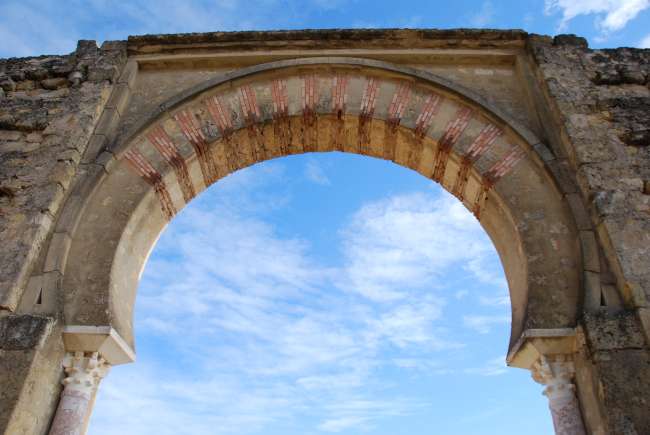
Abdul Rahman III was the son of Abdullah and Muzna – a Christian concubine (of royal blood, making Abdul Rahman III the half-blood nephew of queen Toda of Navarre). He ascended to the throne in 912, when he was only 21 years of age. At the time he inherited the throne, the Emirate of Cordoba was nearly collapsed. In the north, the Christian kingdom of Asturias was approaching southward on a steady pace. In the south, a powerful empire, the Fatimid Empire emerged and attracted the following of many of Andalucia`s inhabitants as being more just then the harsh rule that Andalucians endured under the rule of Abdullah, Abdul Rahman III`s predecessor. Also, within the kingdom, emerged powerful Emirs, especially of the Muladi families (Iberians who converted to Islam during the 8th century). In all, the Andalucian monarch had little influence outside the boundary of the city of Cordoba.
Such were the challenges that faced Abdul Rahman III at the time he ascended to the throne. He started by negotiating a truce with the Kingdom of Asturias to hold his northern borders. This allowed him to focus his energy on subduing the rebellions by the Muladis. This was problematic since the Muladi families were supported Christians subjects within the kingdom, which constituted the bulk of the population. If he attacked the Christian subjects directly, he would be accused of racial bias and this would alienate the entire Christian population from this kingdom, disintegrating the kingdom even further. He chose to tackle this issue by raising a mercenary army that included many Christians. He first attacked his main rival Umar ibn Hafsun in 913 in the fortress of Ecija. After successfully capturing the fort, he went on to capture Jaen and Elvira. This freed his forces to send a detachment to relieve Malaga from a siege by Umar ibn Hafsun`s forces. Throughout his campaign, Abdul Rahman III mercilessly sought the full surrender and submission of the Muladi rebels to his rule. In all, Abdul Rahman III`s initial campaign lasted for 90 days and he was successful in fully capturing a large area to the east of Cordoba stretching southward all the way to Malaga. Later that year, he was able to use the rivalries between the rulers of Seville and Carmona to divide them up and defeat them militarily, which led to their full submission to Abdul Rahman III`s rule.
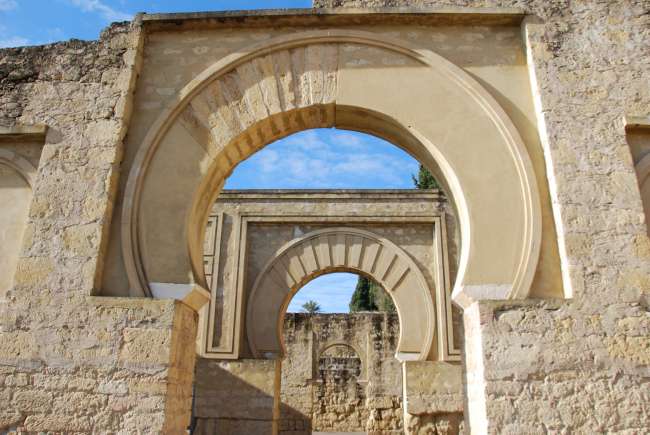
In 914, Abdul Rahman III resumed his campaign eastward and northward against the ibn Hafsun family. In the east, his forces reached Algeciras enabling him to form a naval blockade of supplies arriving from North Africa. In 930, he launched a campaign against Jafar ibn Hafsun, who ruled an area around Toledo. After a 2 year siege, the city surrendered and its ruler sought refuge in the Christian kingdom north of Toledo. The last of the ibn Hafsun family to surrender was Hafs in the powerful fortress of Bobastro. After a six month siege, he surrendered in 928. The only rebel family to escape the Umayyad advance was the Banu Qasi family, who were spared due to the intervention by the Kingdom of Pamplona.
After securing much of his kingdom against rebellion from within, he concentrated on fortifying his kingdom against the growing Fatimid influence in North Africa and the southern provinces of his own kingdom. In January 16, 929, he did the unimaginable and declared himself Caliph, effectively making him the political leader of all people of Andalucia. This was to directly challenge the growing influence of the Fatimid empire. In addition to this significant political move, he sought to back up his position with enhanced “muscle power.” He created a new and powerful fleet in Almeria. Using this new fleet he allowed Berber forces loyal to him to occupy strategic outposts in North Africa, including Melilla, Ceuta, and Tangiers. He later besieged the important Fatimid port of Tunis, which the he agreed to lift in exchange of a large sum of money and the agreement that the Fatimids would stop harassing Andalucian merchant ships in the Mediterranean Sea.
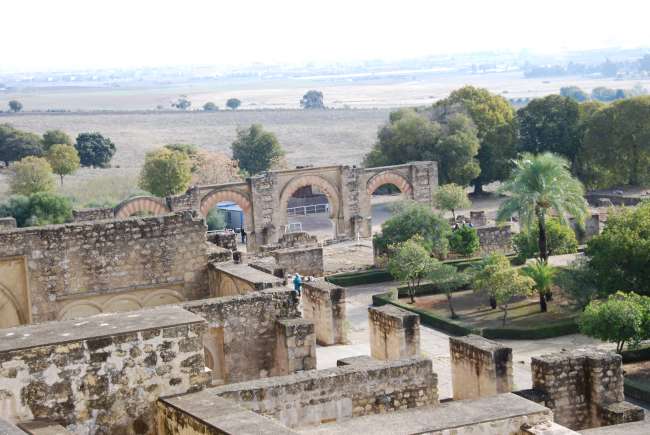
Once his southern border was secure, Abdul Rahman III began to concentrate on his northern border. King Ordono II of Leon has been taking advantage of the turmoil of the Umayyad kingdom and has been steadily encroaching on its territory. An army that Abdul Rahman III sent early on (in 917) was soundly defeated by the Leonese monarch. This time, Abdul Rahman III was more cautious and sent a more powerful army to face his northern foes. In 920, he started with Navarre and defeated its king in battle. When his armies reached the Basque city of Pamplona, he sacked the city and destroyed its cathedral. In 934, he forced the Navarrese queen Toda, his aunt, to submit to his rule. In 937, he conquered more than 30 castles in Leon and forced the Muslim governor, Abu Yahya, in Zaragoza to submit to his rule.
The turning point in the campaign was the Battle of Simancas (or Al-Khandaq in Arabic) in 939, where the Umayyad army, which composed of the caliph`s troops as well as troops from Abu Yahya of Zaragoza, was dealt a crushing defeat by a combined army of the Leonese monarch, Ramiro II, and queen Toda`s son, Garcia Sanchez I, who did not previously submit to Abdul Rahman III`s rule, as well as elements from the Kingdom of Galicia and Kingdom of Asturias. The battle took place near the walls of the city of Simancas, between Burgos and Zaragoza. After several days of battle, the Umayyad army was defeated. This battle had come to define the northern borders of the Umayyad caliphate under the reign of Abdul Rahman III. His later military engagements were by way of proxy with his new allies, his aunt Queen Toda and the ruler of Barcelona, Borrell II.
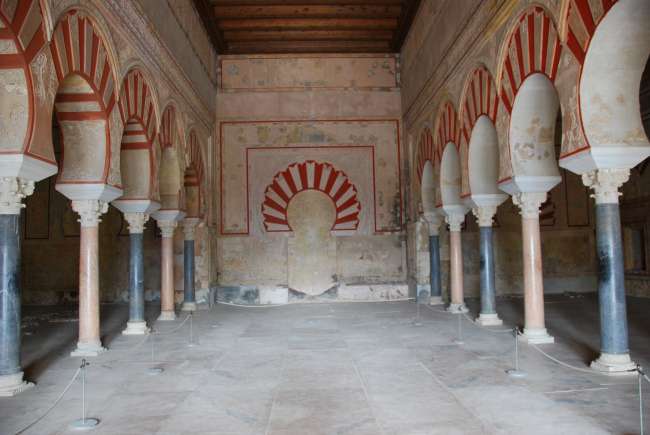
After around 940s, the Umayyad caliph retired to his newly built city of Medinat Azahara. It was to project power and prosperity and be the envy of all his foes and allies alike. The chosen location was 8 miles west of the city of Cordoba on the foothills of the Sierra Morena mountains. The city was built on three terraces, built over the natural elevation of the area. The highest terrace included the royal residences and royal reception hall, the second included the houses of the viziers, the guard room, administrative buildings, and gardens. The third terrace is the rest of the city including the housing of city servants, crafts, and the great mosque and is separated by the two other terraces by the main city gates. The reception hall, where the monarch would meet envoys and ambassadors, was especially well decorated. Some chroniclers report that the throne that the monarch sat on would be elevated by mechanical lions, giving the impression that the monarch`s throne was moving up and down by seemily “magical” forces. In reality, water was and gravity were used as propulsion to an intricate network of gears and levies causing this motion.
Abdul Rahman III died peacefully in his city of Medinat Azahara in 961. His legacy was to reunite his kingdom. The population of the city at the time of his death was somewhere between half a million to one million inhabitants, making it the largest metropolis in Europe (and one of the largest in the world). Given that the population of the city in 2011 is 300,000, one can imagine the might of grandeur of the city a millennium ago. The city boasted several large libraries that were always filled with people reading, 990 public baths, a literacy rate of 99%, and 7 ethnic groups of 3 religions. It also had 1600 mosques (today, only one exists in the form of a museum).
Medinat Azahara remained the center of power of the caliphate he left behind until calamity struck the city in 1009. In 1008, Sanchuelo, the chief minister of the last Andalucian caliph Hisham II, forced his caliph to abdicate the throne and name him the caliph. There had already been very significant tension between the new Berber tribes that have been admitted into the Umayyad army and the rest of the population. The Berber tribes viewed the Andalucian way of life as too lax and immoral; whereas the Andalucians viewed the Berber way of life as too rigid and primitive. By the beginning of the 11th century, the Berber population in Andalucia became so significant that they formed a large minority population. The Andalucians were especially weary of their presence since they dominated the ranks of the army.
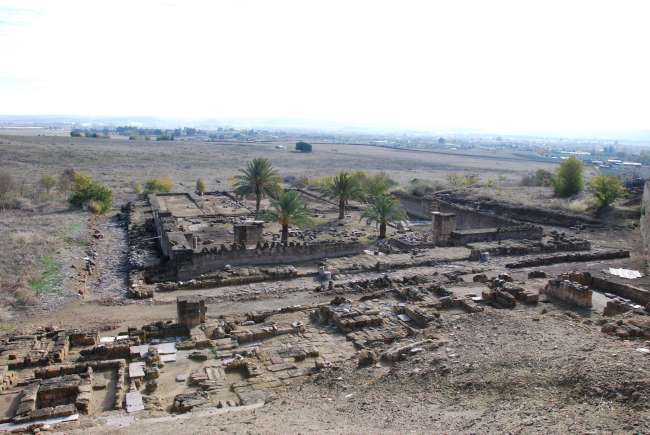
When Sanchuelo declared himself caliph, this confirmed the fears of the population. As soon as Sanchuelo went on an expedition against Alfonso V of Leon in February 1009, the citizens of Cordoba seized their opportunity and rose up against his rule and were led by Muhammad al-Mahdi II, the last dynastical ruler of the Umayyads. He dethroned Hisham II and his troops looted and destroyed the royal city of Medinat Azahara. Sanchuelo aborted his campaign in the north and came back to the city, only to find it destroyed. His troops defected to the new caliph and he was placed under arrest and later hanged. A series of weak leaders unable to conquer one another emerged in all major cities in the caliphate. Cordoba itself was sacked three times over a period of only a decade. Twice it was sacked by an alliance of weak leaders and Christians allies (first the Castilians in November 1009 and then the Catalans in May 1010). The city was sacked a third time, this time by another petty ruler with Berber support. With the absence of a strong central rule, the other cities fended for themselves and formed independent kingdoms, never to be united again under Muslim rule.
Medinat Azahara was destroyed in 1009 and never rebuilt again. The city was rediscovered again in 1911. Most of the city was found buried underground. It was found to occupy an area 1.5km by 0.75km (or 270 acres). Areas restored include two caliphal residences, two royal residences, reception hall, garden spaces, administrative buildings, and a mosque (Aljama mosque, below the hills of the palaces).